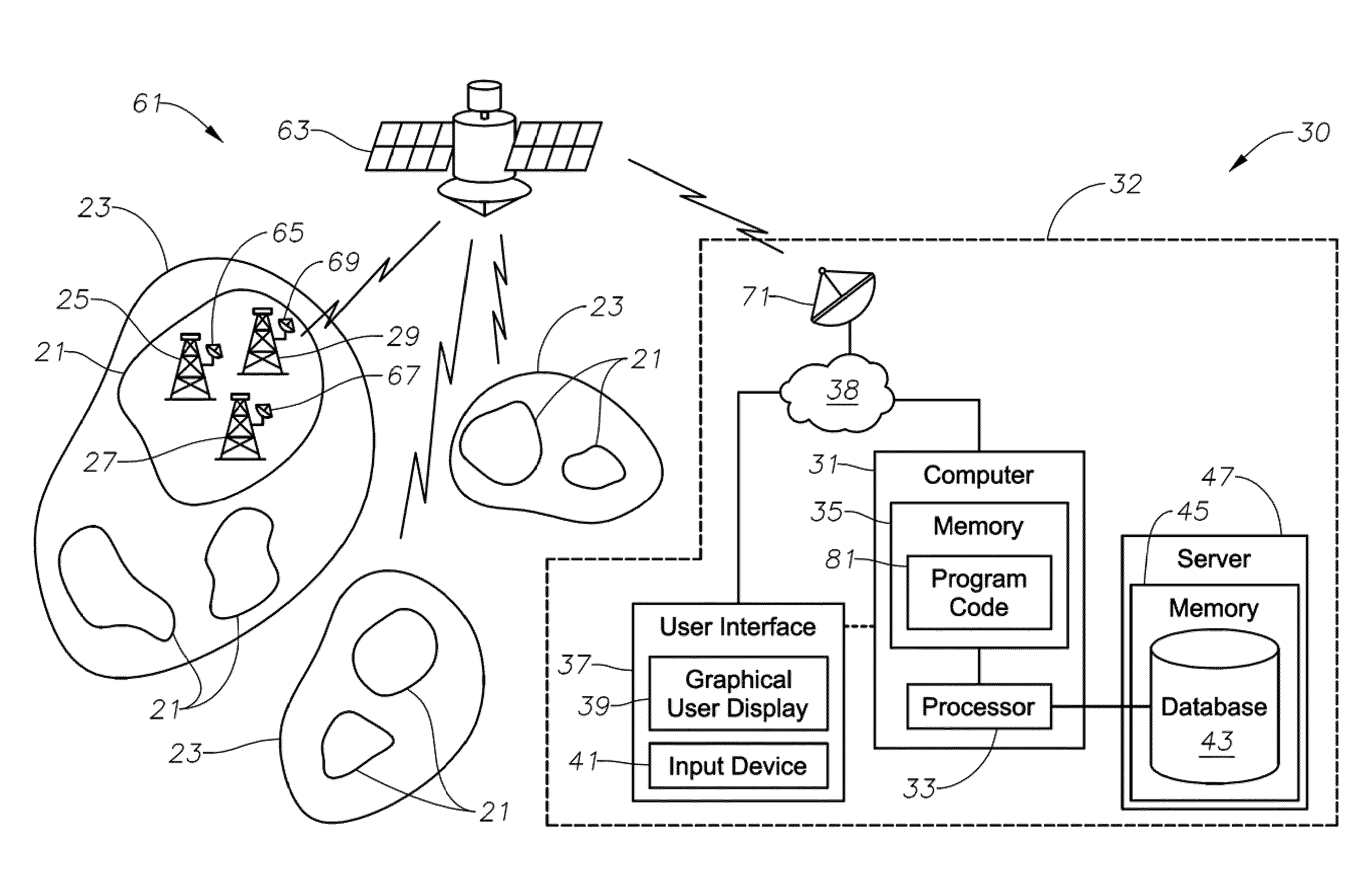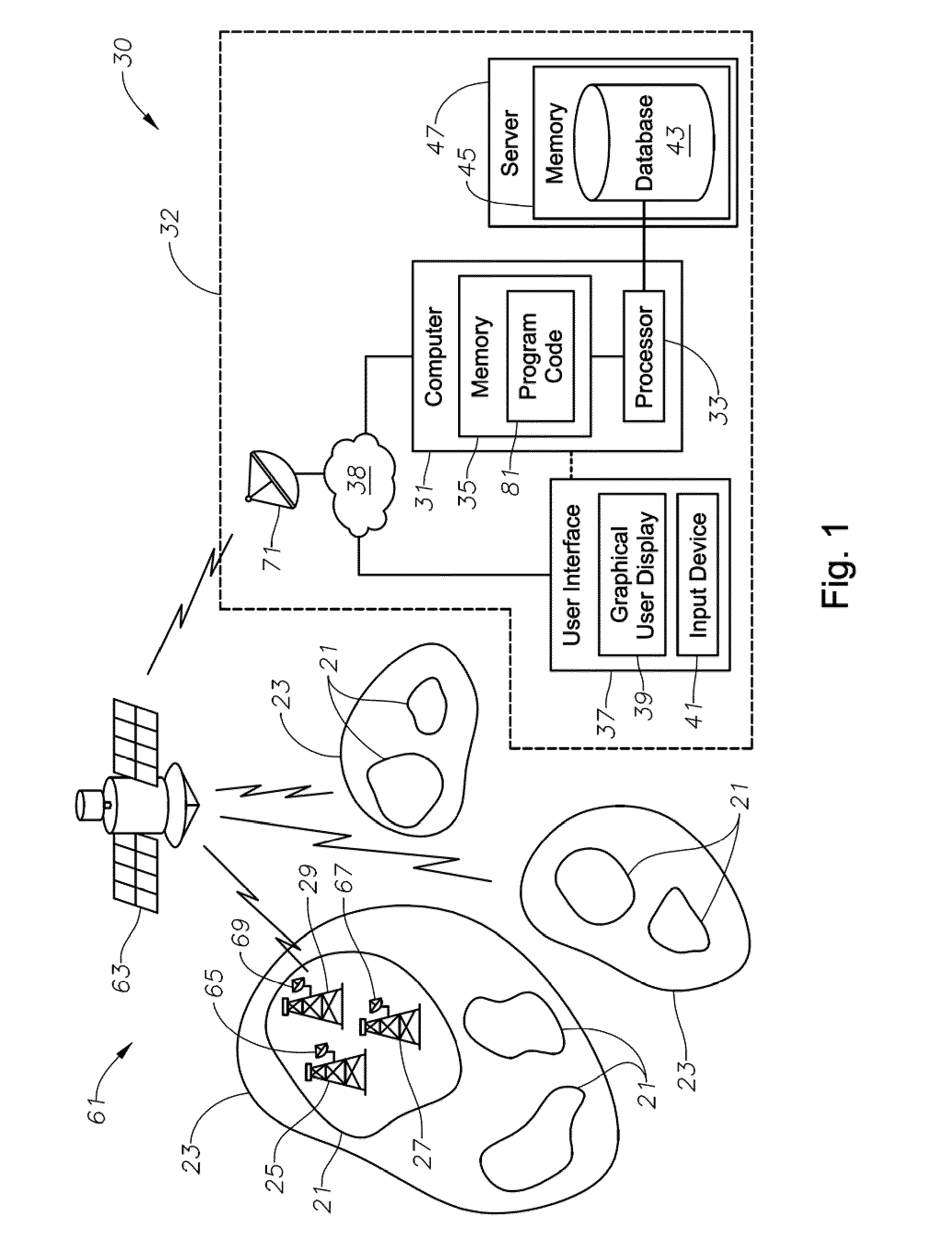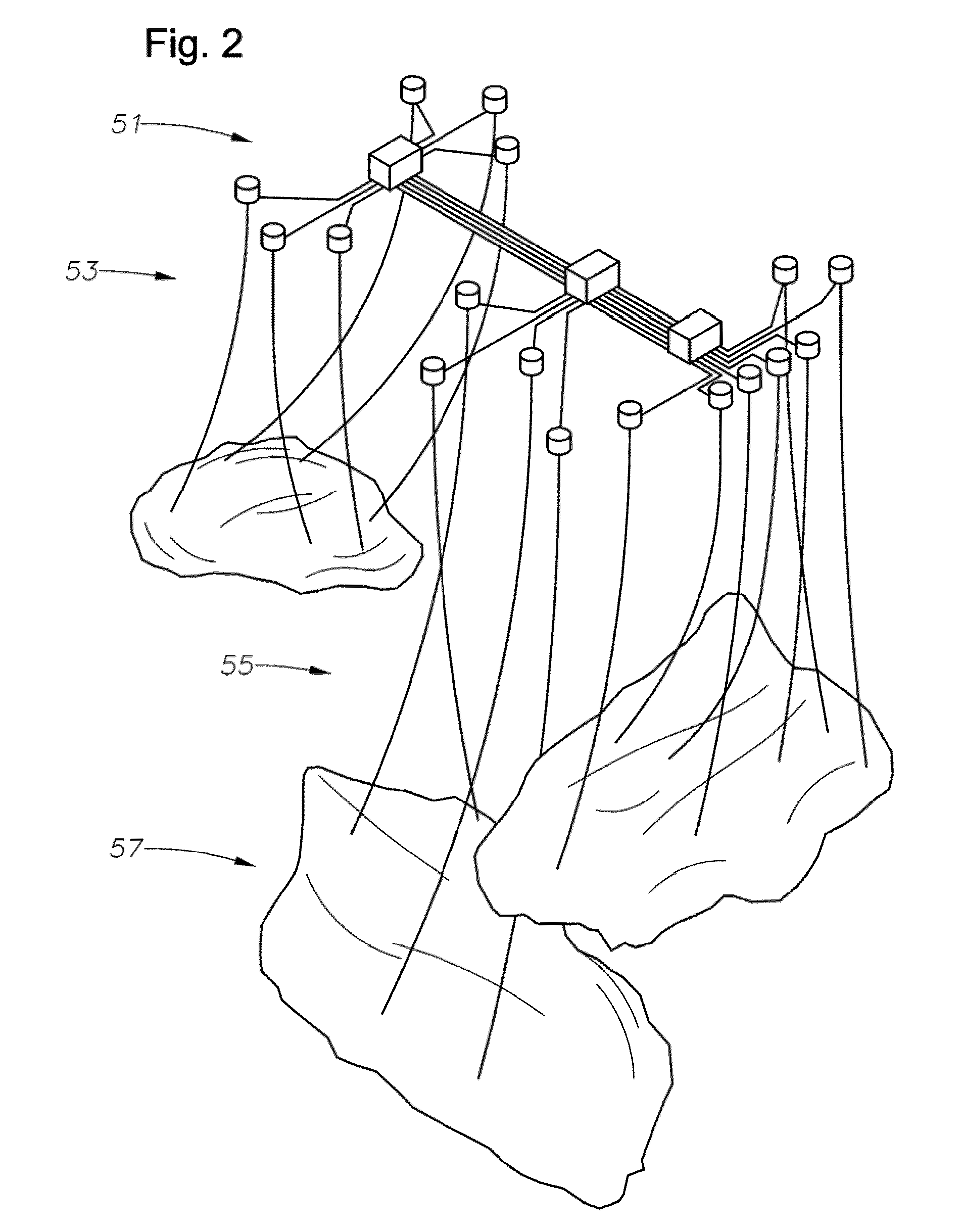[0011]In view of the foregoing, various embodiments of the present invention advantageously provide a
system, program product, and methods of providing real-time reservoir management of multiple reservoirs across one or more fields that can provide
continuous data, and which allows reservoir engineers to maximize their understanding of important reservoir performance messages and to identify production injection optimization opportunities. Various embodiments of the present invention also advantageously provide a
system, program product, and methods of providing real-time reservoir management of multiple reservoirs across one or more fields that can negate a need for shutting down a well in order to obtain representative static reservoir (e.g., bottom hole) pressure values—allowing for substantially continuous producing operations, and that does not require the performance of annual / biannual
wireline surveys or the associated logistics, e.g., manpower and survey equipment including a
wireline truck, pressure gauges, etc., needed to perform such annual / biannual wireline surveys.
[0018]Various embodiments of the present invention advantageously combine pressure and rate data from different sources to allow engineers to better understand and manage oil reservoirs in real-time for maximum oil
recovery. Various embodiments of the present invention advantageously combine integrated field management (IFM) and
oil field manager (OFM) “I-Field”
software capabilities to generate real-time reservoir pressure maps across both producer wells (e.g., using measured data) and injection wells (e.g., using
calculated data) to aid in the management of oil reservoirs in real-time, for example, by implementing the following steps / operations: calibrating a proper injection well model with accurate well injectivity index by matching multi-rate test results; estimating real-time static
bottom hole pressure (SBHP) for each injection well (
injector) from real-time
injection rate and injection
wellhead pressure data; and combining estimated (calculated) real-time static
bottom hole pressure for the injection wells with measured static
bottom hole pressure measured, for example, using permanent downhole monitoring systems (PDHMS) at the producer wells, to thereby generate real-time reservoir pressure displayed, for example, in the form of automated isobaric maps. The ability to generate continuous static reservoir pressure trends for producer and injection wells, according to embodiments of the present invention, as compared to only twice per year using conventional methods, can advantageously help reservoir engineers: better understand reservoir performance for better
recovery; realize savings of the cost of having to conduct expensive wireline surveys; minimize operational interruptions caused by shutting down wells / interrupting production; and optimize strategies, in real-time, for maximum oil recovery. Further, various embodiments of the present invention can be used to monitor pre-injection reservoir performance.
[0019]Various embodiments of the present invention provide an autonomous I-Field system which can automatically acquire downhole data to run a continuous
reservoir simulation, in real-time, for example, to make an automated determination of optimum production and injection allocations and to make an automated decision to send commands to downhole
control valves for one or more or all wells necessary to implement such autonomous automated
production strategy. In other words, according to an example of an embodiment of the present invention, all of the production and injection wells can be smart wells, controlled by a central I-Field control computer / console, for example, which, based on a continuous (ongoing)
reservoir simulation, can automatically provide intervention and control signals in response to expected future events as indicated by the continuously updated simulations. Further, embodiments of the present invention allow reservoir engineers to obtain information, at no additional incremental cost, to generate continuous real-time static reservoir pressure for each well, based, for example, on real-time measured data at the wellhead, which can result in: an improved understanding of reservoir performance (e.g., better recovery); a savings of the cost of conducting expensive wireline surveys; and a minimization of operational interruptions caused by shutting down wells.
[0021]Various embodiments of the present invention can also utilize I-field technology in multiple fields to monitor pre-injection performance, in real-time, and to adapt injection strategies accordingly, before putting the fields on production. Real-time reservoir pressure,
infectivity, and injection rate data can also advantageously be utilized to better understand reservoir performance using the modeling capability, according to various embodiments of the present invention, without running costly wireline surveys.
 Login to View More
Login to View More  Login to View More
Login to View More 


